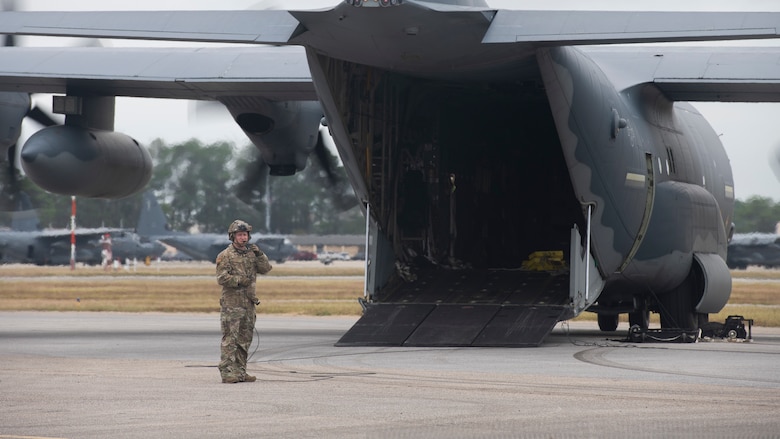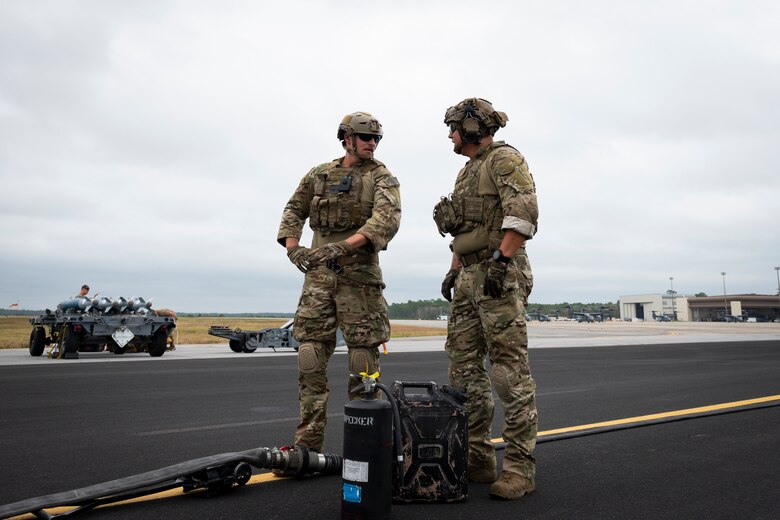After nearly 20 years of fighting the Global War on Terrorism, processes and decisions formulated to address an almost singular focus on counter-violent extremist organizations are being challenged, as AFSOC transforms to the "AFSOC We Will Need."
"This is an AFSOC primed and ready to compete against pacing and peer threats within the larger joint force, while remaining a critical part of the joint SOF team," said Lt. Gen. Jim Slife, commander of AFSOC. "Without enabling our people, we are unable to create the AFSOC we will need."
AFSOC's Strategic Guidance, released in January, is synchronized with the Air Force chief of staff's strategic approach, released Aug. 31. In his first-wave strategy document, called "Accelerate Change or Lose," Air Force Chief of Staff Gen. Charles Q. Brown, Jr. outlined five focus areas requiring attention to maintain the Air Force's competitive advantage in current and future conditions.
"I fully support the chief of staff's position on empowering and trusting Airmen to solve any problem, and we have been seeking better ways to do this in AFSOC over the last 10 months," Slife said.
AFSOC's alignment with CSAF guidance doesn't end there. The command's emphasis on equipping its Airmen to compete and win echoes the broader Air Force commitment that "we must collaborate within and throughout to succeed."
Both strategy documents agree that the things that brought the United States' combat success for decades no longer guarantee success in the future; instead, an urgent concentration on developing Airmen and while modernizing AFSOC is needed to avoid failures amid great power competition.
AFSOC's strategic guidance emphasizes three main focus areas:
-Develop human capital to enable Airmen to maximize their potential
-Organize to ensure human capital is ready for full-spectrum operations, from the lowest tactical level to a theater-wide operational level
-Equipping human capital with concepts and technology to compete and win
These efforts include developing new developmental pathways for officer, enlisted and civilian career paths; creating a sustainable AFSOC Force Generation model; increase investments in training, and pathfinding for the Air Force to rapidly field new technology.
AFSOC Airmen will see investment by leaders at all levels and opportunities to participate in the change we need in order to transform from the "AFSOC we needed" to "the AFSOC we will need."
"The world has changed. The key players have evolved; and to remain competitive, we must rapidly change too," Slife said.

A loadmaster assigned to the 9th Special Operations Squadron communicates with aircrew members on an MC-130J Commando II during exercise Agile Flag 21-1 at Hurlburt Field, Fla., Oct. 27, 2020. The MC-130J flies clandestine, or low visibility, single or multiship, low-level air-refueling missions for special operations helicopters and tiltrotor aircraft, and infiltration, exfiltration and resupply of special operations forces by air or land intruding politically sensitive or hostile territories. (U.S. Air Force photo by Staff Sgt. Joseph Pick)

Senior Airmen Ryan Ruesewald and Cody Washek, forward area refueling point members assigned to the 1st Special Operations Logistics Readiness Squadron, prepare to conduct a FARP operation during exercise Agile Flag 21-1 at Hurlburt Field, Fla., Oct. 27, 2020. FARP Airmen perform covert nighttime refueling operations in deployed locations where fueling points are not accessible or when air-to-air refueling is not possible. (U.S. Air Force photo by Staff Sgt. Joseph Pick)






